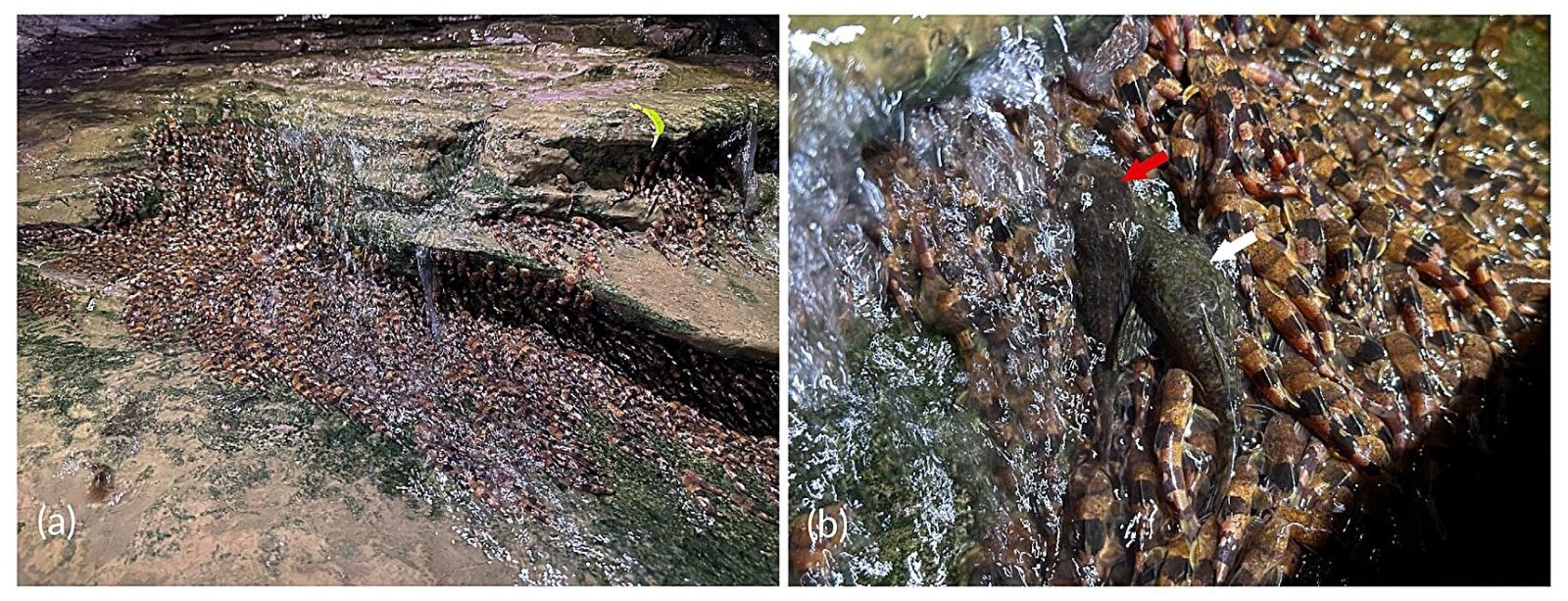🐟 A first: thousands of fish filmed climbing rocks out of the water!
Published by Cédric,
Article author: Cédric DEPOND
Source: Journal of Fish Biology
Other Languages: FR, DE, ES, PT
Article author: Cédric DEPOND
Source: Journal of Fish Biology
Other Languages: FR, DE, ES, PT
Follow us on Google News (click on ☆)
Recent observations have shed light on a little-known behavior in a rare species of catfish. Brazilian scientists have documented this unique migratory phenomenon, offering new perspectives on the ecology of small-sized species.

Fish migration at the edges of Sossego waterfall on the Aquidauana River, Paraguay River basin, Mato Grosso do Sul State, Brazil.
(a) Aggregation of Rhyacoglanis paranensis (Pseudopimelodidae),
(b) Hypostomus khimaera (red arrow) and Ancistrus sp. (white arrow) (Loricariidae) swimming upstream at the same location with thousands of R. paranensis specimens.
Credit: Journal of Fish Biology (2025).
An unprecedented phenomenon observed
Military personnel initially reported this massive gathering of catfish. The event occurred in November 2024 on the Aquidauana River in Mato Grosso do Sul State.
The research team confirmed the presence of thousands of Rhyacoglanis paranensis specimens. This aggregation represents the first documented observation of this type for this species.
The climbing behavior was also completely unknown until now. The fish progressed slowly upstream while forming large groupings.
Secrets of a vertical ascent
The climbing occurred mainly during twilight and nighttime hours. During the day, the fish hid under rocks to avoid the heat.
Researchers analyzed the progression technique of these catfish. They use their spread pectoral fins and lateral movements to advance.
A suction mechanism appears to help them adhere to rocky surfaces. This remarkable adaptation allows them to negotiate nearly vertical walls.